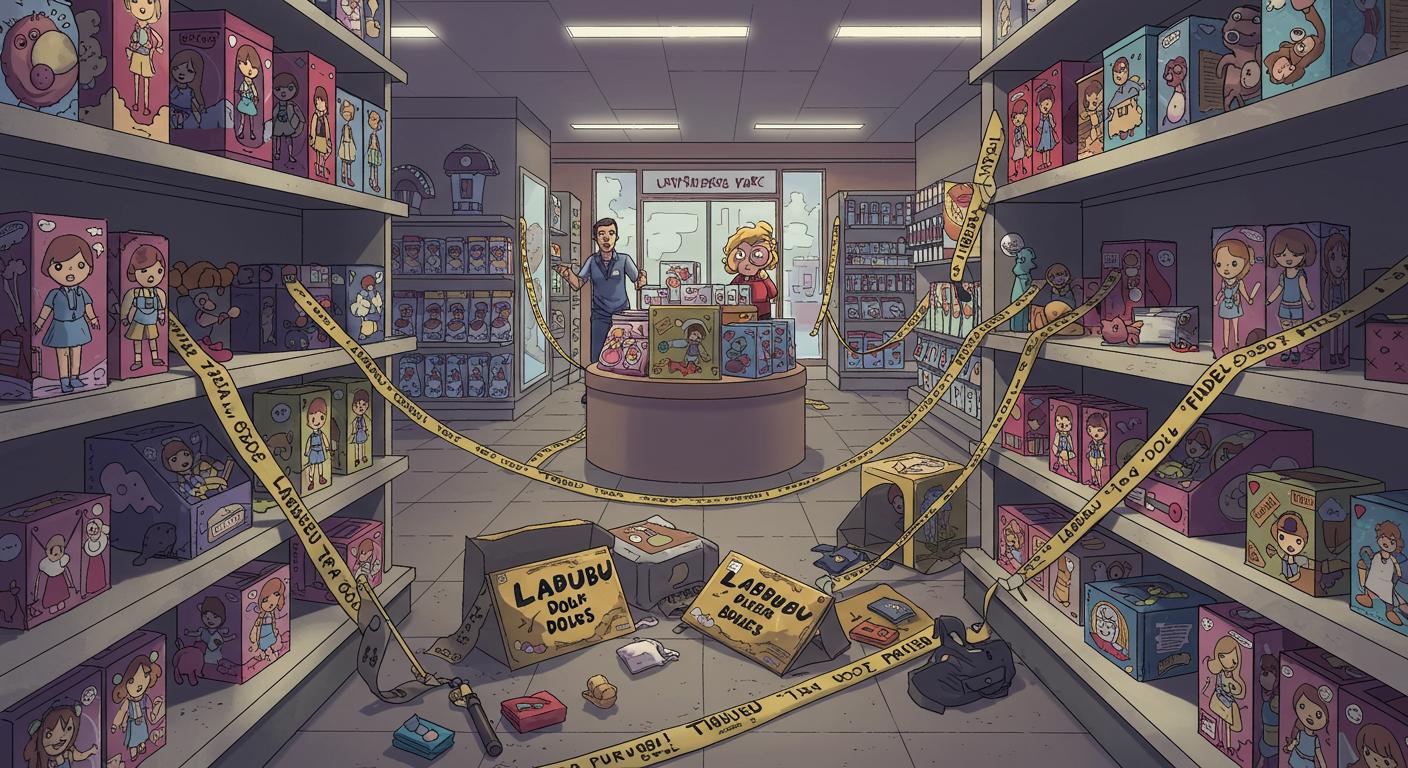Some crimes fit a prefab script: jewels stolen from velvet-lined cases, cash registers emptied in the dead of night. But then there are those incidents that veer, with almost manic precision, into the realm of the oddly specific. Such is the saga of the recent Labubu doll heist in La Puente, California—a burglary that, at first blush, sounds less like Ocean’s Eleven and more like a carefully curated episode of collectible toy chaos.
The Anatomy of a Plush Caper
An Associated Press story, published via NewsNation, outlines the basics: a group of masked intruders targeted a toy shop in La Puente early Wednesday, whisking away approximately $7,000 worth of Labubu plush dolls. Authorities from the Los Angeles County Sheriff’s Department revealed that the suspects relied on a stolen Toyota Tacoma for their nocturnal escapade. Interestingly, the truck itself was promptly recovered, offering a reminder that, for these thieves, the true objective wasn’t automotive but rather decidedly plush.
Labubu dolls, for the uninitiated, aren’t just any shelf-warmers. Created by Hong Kong-born artist Kasing Lung, these fanged, wide-eyed monster toys have evolved from quirky art pieces into prized collectibles over the past decade. As captured in a detail from an Associated Press file photo, their appeal has even gone international with recent launches in places like Berlin. The dolls’ trajectory—from niche novelty to objects fueling a quiet global frenzy—has elevated their profile well beyond the world of casual toy shopping.
Inventory Gone, Store Trashed, Internet Mourning
Described in the AP report, the store at the center of this heist—One Stop Shop—took to Instagram in the aftermath, sounding equal parts devastated and bewildered. Their post explained that the thieves “took all of our inventory [and] trashed our store.” Surveillance footage reviewed by the outlet and referenced in the report displays a group clad in hoodies and masks, picking through merchandise with unsettling efficiency before making off with boxes of dolls.
The Instagram post, noted in the article, summed up the emotional aftermath: “We are still in shock.” For a collectors’ shop, there’s a peculiar heartbreak in realizing your most idiosyncratic treasures are suddenly high-value targets. When did the world start placing such weight—literal and figurative—on plush monsters with unnervingly toothy grins?
According to law enforcement statements included in the report, the investigation remains ongoing, with little public information on either suspects or the plush loot’s current whereabouts.
The Strange Economy of Rarity
It’s tempting to see this as a one-off incident, but the context suggests otherwise. The AP account highlights that Labubu dolls, much like rare sneakers or vintage trading cards, can fetch impressive sums on the secondary market; in some cases, individual pieces trade hands for hundreds or thousands of dollars. With scarcity in play and collector fervor running high, the math—if not the ethics—behind the heist tracks.
There’s a surrealism to the idea of a plush-based black market, but perhaps it’s less far-fetched than it first seems. Boutique shops packed with oddball treasures often slip beneath the security radar compared to banks or jewelry stores. Is this heist an outlier, or a sign we’re entering an era where the loot of choice involves gradient-dyed polyester and niche, monster-tooth smiles?
Outlandish, But Telling
As the outlet documents, while the details may provoke a wry chuckle, the stakes for small shops like One Stop Shop are very real. Being stripped of inventory and peace of mind over a collection of plush monsters is both peak 2025 and a gut punch for the independent retailer. Meanwhile, somewhere out there, a batch of Labubu dolls is either trading hands in private deals or sitting boxed up, waiting for the next round of fervent bidding.
It does raise the question—are collectible toys the new gold bars for would-be thieves, or is this simply a strange blip in the grand tradition of very specific, very expensive heists? The line dividing childhood nostalgia from high-stakes crime seems, at times, alarmingly thin.
Anyone who’s ever wandered the oddball aisles of an independent shop or tumbled down a forum rabbit hole knows the truth: sometimes, the things people cherish—and the lengths to which others will go to seize them—make the world’s weirdest crimes look almost inevitable.







